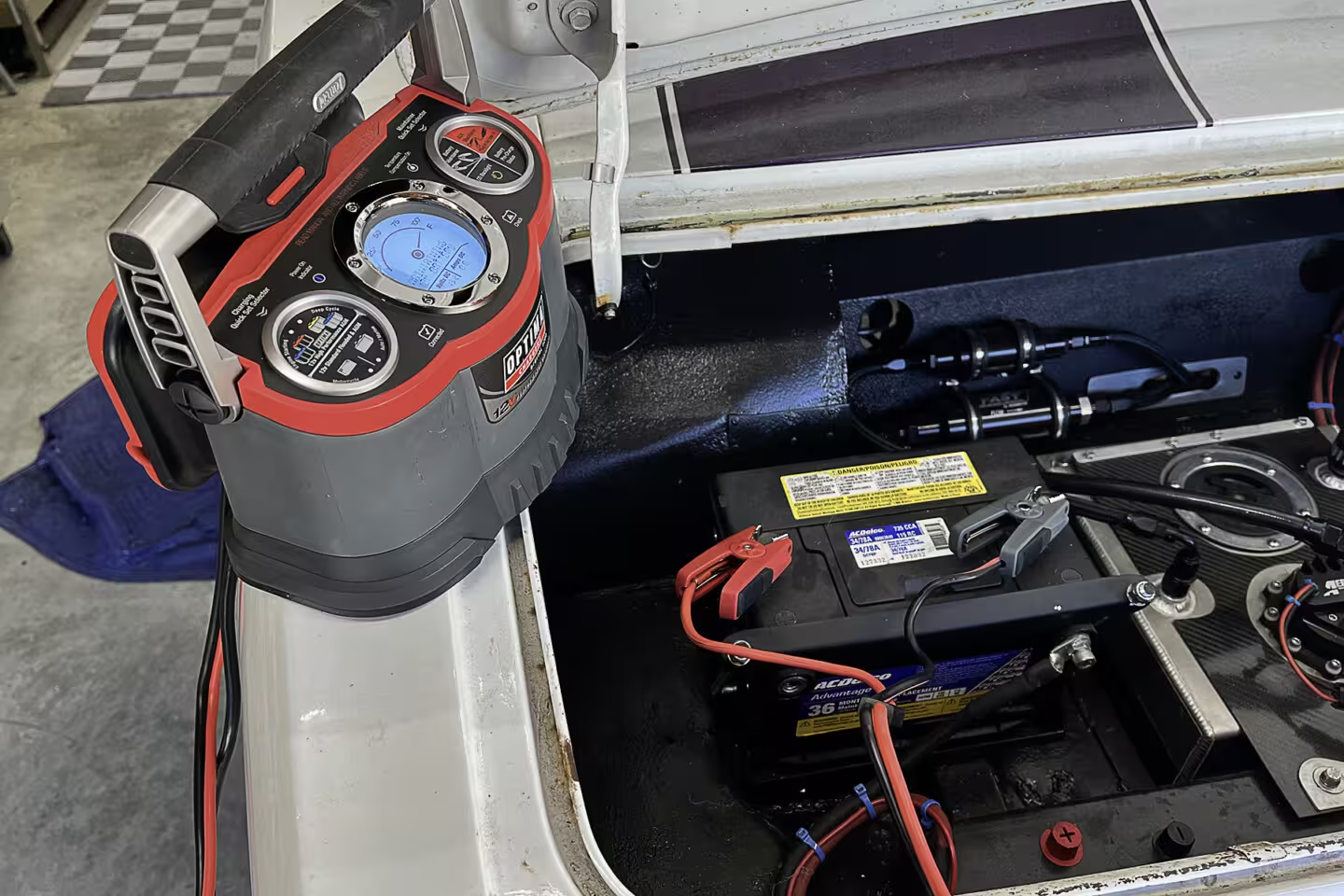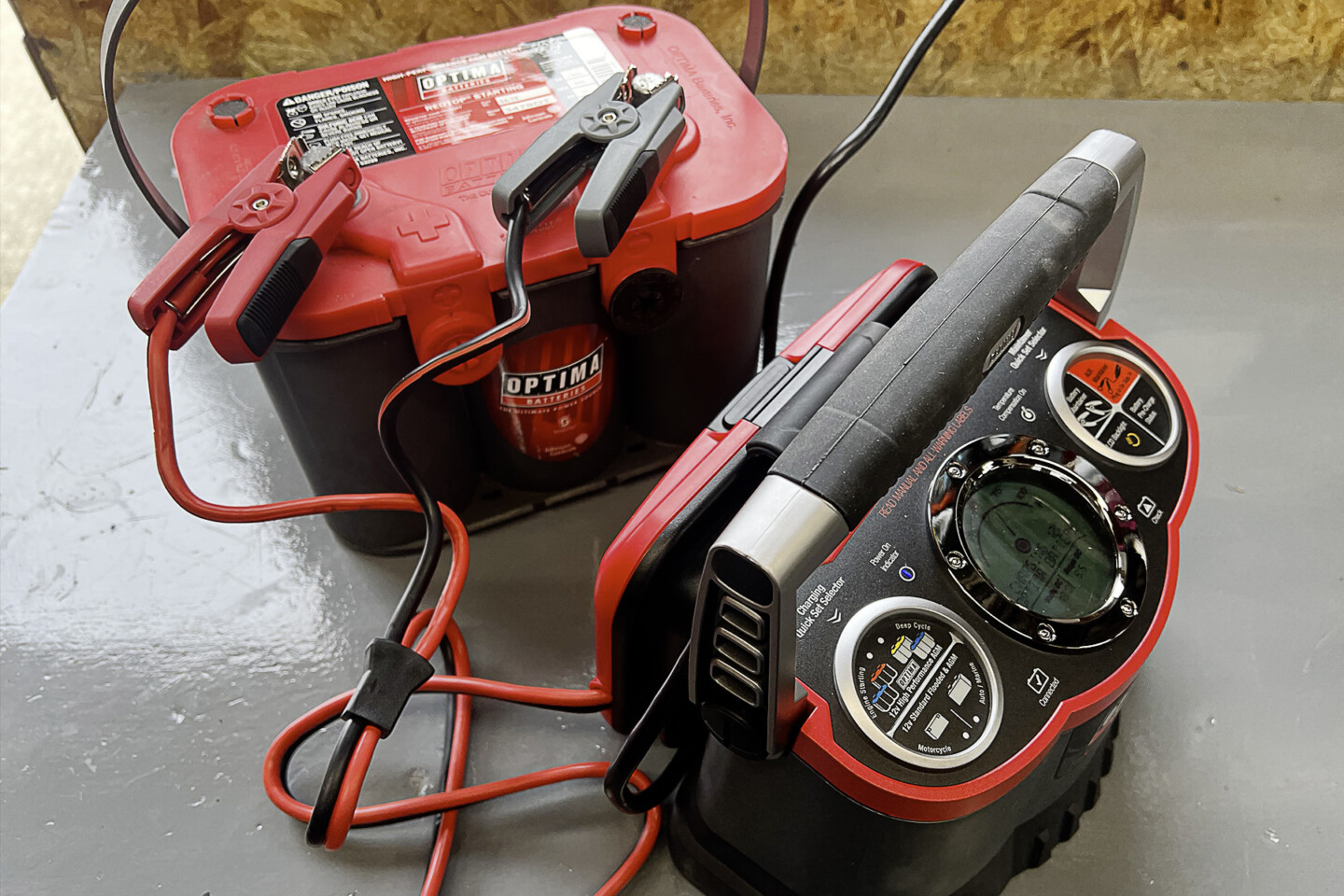You can’t turn on a win light at the track if your vehicle won’t start. That means you need to not only make sure you’re maintaining your race car’s battery, but also making sure the battery you select is right for your application.
One of the best ways to prevent battery issues at the track is to make sure you’re maintaining your batteries at home. This is done simply by keeping the battery fully charged to the manufacturer’s recommended voltage level. A good battery charger will not only charge the battery to this level but can also be used to maintain that voltage level between races in maintenance mode. You also want to be sure your battery charger can provide enough current to maintain the right amount of voltage to the battery, and replenish it between rounds.
What if you don’t have a charger that can maintain a battery? Jim Mcllvaine from OPTIMA Batteries explains what you can do.
“If a battery cannot be connected to a maintainer as it sits in a garage in between trips to the track, it should be fully charged and completely disconnected. Then, before loading it onto the trailer, fully charge it again, because all batteries will self-discharge to some degree and a significant amount of energy can be consumed starting a car and getting it on and off a trailer, just getting it to the race track, especially if the car has no charging system, or has an underdriven charging system.”
The type of battery you select to use in a race car is very important. Since the electrical system in many race cars is a total loss system, where there’s no alternator, a deep-cycle type of battery should be used. As long as you get the correct size of battery, it should be able to provide enough power to start the car, and handle a cycling load better than a standard battery.
Racers are always trying to find ways to remove weight from their vehicle to gain a performance advantage. A battery may look like an easy spot to drop some pounds, but you need to be careful not to get too small of a unit in the name of saving weight.
“Less weight equals more speed, so many racers will try to run the lightest possible battery they can, but it’s also important not to lose sight of the reserve capacity available from a battery, which usually comes at the cost of additional weight. Batteries in many racing applications with underdriven or no charging systems need to keep delivering power to pumps, fans and other accessories as long the car is running, so…
Click Here to Read the Full Original Article at DragzineDragzine…


